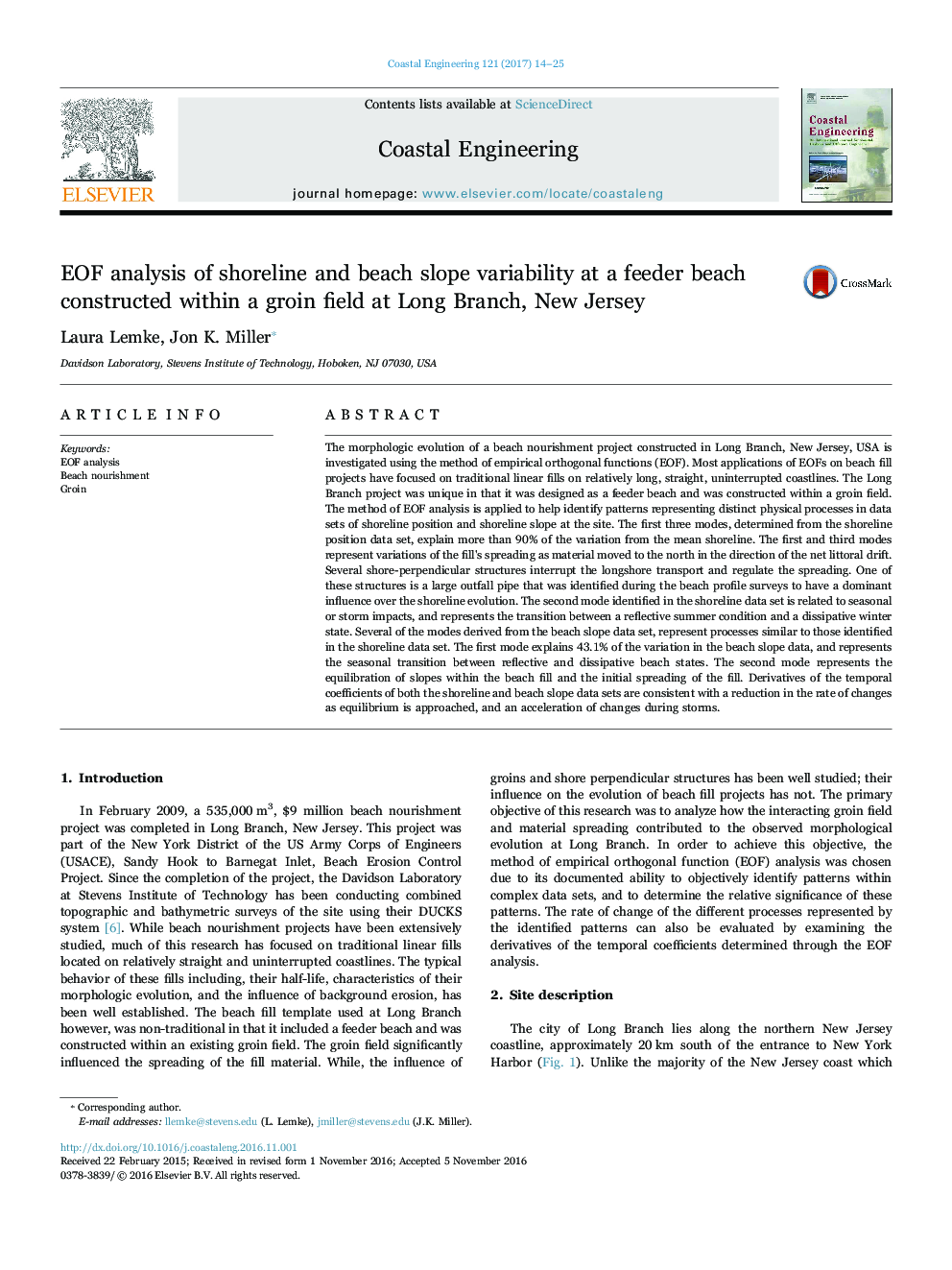| Article ID | Journal | Published Year | Pages | File Type |
|---|---|---|---|---|
| 5473381 | Coastal Engineering | 2017 | 12 Pages |
Abstract
The morphologic evolution of a beach nourishment project constructed in Long Branch, New Jersey, USA is investigated using the method of empirical orthogonal functions (EOF). Most applications of EOFs on beach fill projects have focused on traditional linear fills on relatively long, straight, uninterrupted coastlines. The Long Branch project was unique in that it was designed as a feeder beach and was constructed within a groin field. The method of EOF analysis is applied to help identify patterns representing distinct physical processes in data sets of shoreline position and shoreline slope at the site. The first three modes, determined from the shoreline position data set, explain more than 90% of the variation from the mean shoreline. The first and third modes represent variations of the fill's spreading as material moved to the north in the direction of the net littoral drift. Several shore-perpendicular structures interrupt the longshore transport and regulate the spreading. One of these structures is a large outfall pipe that was identified during the beach profile surveys to have a dominant influence over the shoreline evolution. The second mode identified in the shoreline data set is related to seasonal or storm impacts, and represents the transition between a reflective summer condition and a dissipative winter state. Several of the modes derived from the beach slope data set, represent processes similar to those identified in the shoreline data set. The first mode explains 43.1% of the variation in the beach slope data, and represents the seasonal transition between reflective and dissipative beach states. The second mode represents the equilibration of slopes within the beach fill and the initial spreading of the fill. Derivatives of the temporal coefficients of both the shoreline and beach slope data sets are consistent with a reduction in the rate of changes as equilibrium is approached, and an acceleration of changes during storms.
Keywords
Related Topics
Physical Sciences and Engineering
Engineering
Ocean Engineering
Authors
Laura Lemke, Jon K. Miller,
